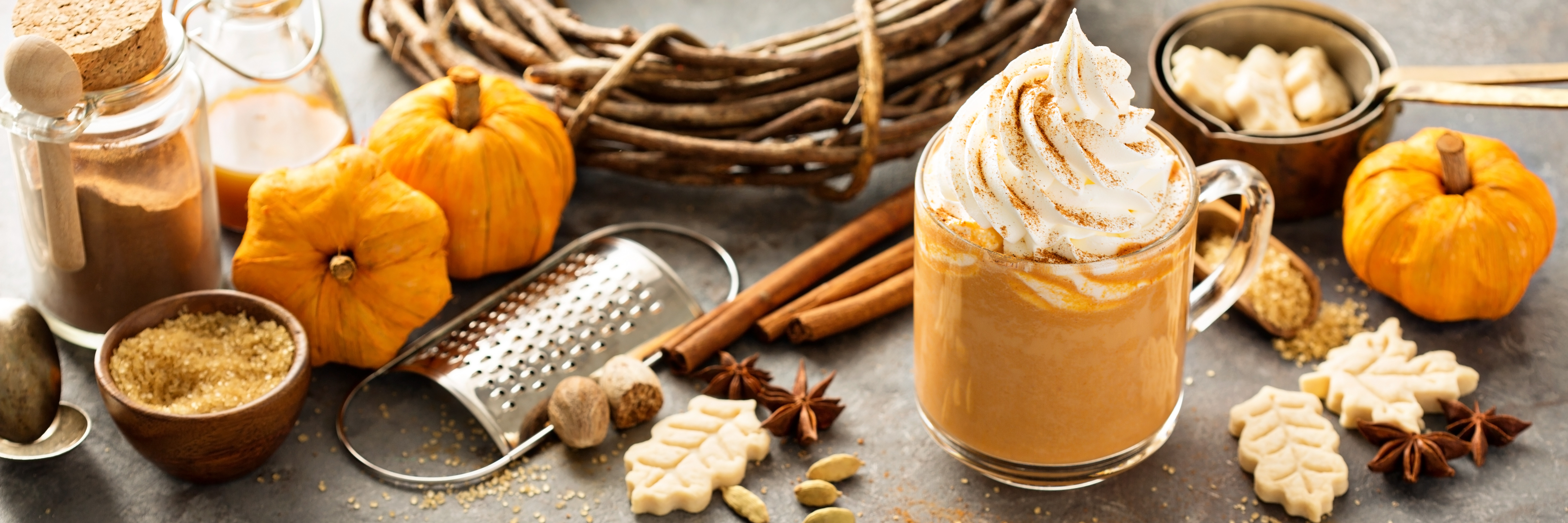By: Gabrielle Guzinski
Autumn is finally here which means pumpkin spice anything can be incorporated into a flavor shot to fall decor. Unpopular to contrary belief, pumpkin spice is not just a singular flavor, but in fact, it is multiple spices blended to create this staple seasoning. The mixture consists of, sweet spices - cinnamon, nutmeg, ginger, and either cloves and/or allspice. Apart from allspice, all of these spices are native to Southeast Asia, especially the so-called “Spice Islands,” more commonly known as the Maluku Islands (or Molucca Islands) near Indonesia, where nutmeg trees (which also provide mace) and clove trees originated. Cinnamon is native to Sri Lanka, and ginger is native to Maritime Southeast Asia. Allspice is also a plant of the tropics, native to the Caribbean and Central Mexico.
While pumpkin spice seems like it has only been around since the start of the decade, it dates all the way back to the, 16th century, all of these spices were available in Europe traveling via trade routes across Asia. Chinese and Arab traders traveled overland via the Silk Road or on ships from the Red Sea across the Indian Ocean. During European voyages, these flavors were brought over which lowered their price because sugar and chocolate, the plantation economy allowed spices to be produced in massive quantities quite cheaply. The flavors that were once the purview only of wealthy European aristocrats were, by the end of the 18th century, much more widely affordable by ordinary people. By the middle of the 19th century, ginger, cinnamon, nutmeg, mace, and cloves (along with sugar and cocoa) were positively common. The spice is linked with autumn because in European cuisine, the most expensive foods were served around special feast days, like Christmas and Twelfth Night. Fruit cakes were rich in spices, spices flavored custards and puddings, and cookies flavored with ginger, cinnamon, mace, nutmeg, and cloves were all staples of the winter holidays. It would not be fall without automatically associating pumpkin spice with this season.
Another staple object that is popular is pumpkins itself. Pumpkins are native to North and Central America and have been growing here for an estimated 10,000 years, making them a quintessentially “American” ingredient. They are also a fall food by nature, found at their best in October harvest month. New England writer Amelia Simmons published American Cookery, the first cookbook in the United States produced by one of its own citizens, the earliest recipe for pumpkin pie was released. The recipe was not the cause of mass fanfare at the time of its creation, but it did pave the way for the gradual evolution and elevation of sweet and savory pumpkin dishes in the rural north, where pumpkin farms were most frequently found. By the time President Lincoln had established in November as Thanksgiving’s official date in 1863, the pumpkin had become associated with bounty, nostalgia, and the ‘unproblematic’ traditionalism of the northern states. From being eaten to carved there has always been a place for this timeless fruit for harvest time.
Whether it is a food additive or in its true form, pumpkin or pumpkin spice are two iconic items that would commercialize fall the way it is known today. Both objects are some of the most popular when it comes to preparing for this time of the year. This is a reminder to grab a pumpkin or pumpkin spice if you have not already.
Some of the above information has been sourced and quoted from The Food Historian and Spoon University.

